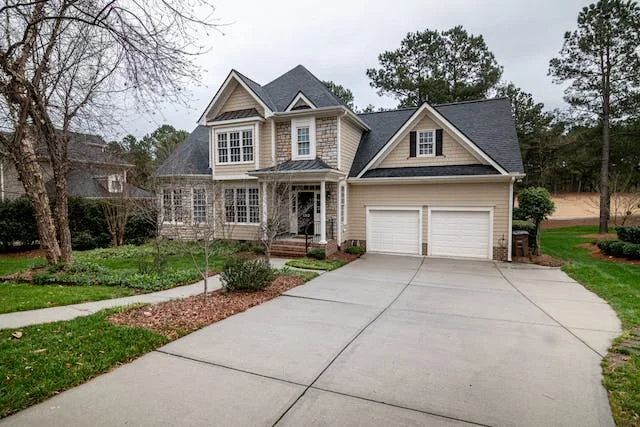Buy To Let Vs Residential Mortgage: The Differences And The Considerations For Choosing The Right One
Embarking on the journey of property ownership involves critical decisions, and chief among them is selecting the right mortgage. Whether you’re envisioning a cozy family home or aiming for investment returns through renting, understanding the distinctions between buy-to-let and residential mortgages is paramount. In this article, we will discuss the differences between residential vs. buy-to-let as well as the different criteria and features of both.
What is a buy-to-let mortgage?
A buy-to-let mortgage is a type of mortgage loan that is specifically designed for individuals who want to purchase a property with the intention of renting it out to tenants. Here’s a simple breakdown:
What is a residential mortgage?

A residential mortgage is a financial tool designed to facilitate home ownership, enabling individuals and families to purchase a property for personal use and create a stable foundation for long-term housing needs. Here’s a simple breakdown:
What is the difference between Buy to Let vs Residential Mortgage?
A buy-to-let mortgage is tailored for those investing in property to lease to tenants, while a residential mortgage is designed for individuals or families purchasing a home for personal use. The former considers potential rental income, while the latter focuses on facilitating homeownership for the occupier.
Higher Deposit Requirement for Buy-to-Let Mortgages
Buy-to-let mortgages typically demand a higher deposit, with a minimum of 25% of the property’s value. To secure better mortgage terms, a deposit of around 40% is advisable. In contrast, residential mortgages usually require a minimum deposit of 10%, but a higher deposit can reduce monthly interest payments.
Preference for Interest-Only Mortgages in Buy-to-Let
Landlords often opt for interest-only mortgages for buy-to-let properties. Unlike repayment mortgages common in residential ownership, interest-only mortgages involve paying only the interest monthly. This eases financial strain during rental income gaps, but landlords must repay the full loan amount at the mortgage’s end, sometimes by selling the property.
Higher Costs Associated with Buy-to-Let Mortgages
Buy-to-let mortgages generally incur higher costs, including elevated monthly interest rates and substantial product fees, often around 3.5% of the property value. Landlords must also cover additional expenses like higher stamp duty, income tax on rental income, letting agent fees, council tax, maintenance costs, and other ongoing expenditures. This makes buy-to-let mortgages more expensive overall compared to residential mortgages.
Stricter Affordability Criteria for Buy-to-Let Mortgages
Lenders for buy-to-let mortgages often have more stringent affordability criteria. They typically assess the borrower’s ability to cover mortgage payments based on rental income and may have higher income requirements compared to residential mortgages, where the focus is primarily on the borrower’s personal income.
Limited Consumer Protection for Buy-to-Let Mortgages
Buy-to-let mortgages are considered commercial transactions, and as such, they come with fewer consumer protections compared to residential mortgages. Borrowers with residential mortgages benefit from more regulatory safeguards, including the Financial Conduct Authority’s (FCA) Mortgage Market Review rules, designed to ensure borrowers are offered affordable and suitable mortgage products. Buy-to-let mortgages, being more business-oriented, lack some of these protective measures.
Decoding Buy-to-Let Mortgages: The Key Considerations and Criteria You Should Navigate

5 Points Worth Noting on Affordability Criteria
Other Criteria for a Buy to Let Mortgage
Age:
Property Ownership:
Credit History:
Can I Purchase a Buy-to-Let Property as a First Time Buyer?
The simple answer is yes, but there are some vital things to consider. Some Key Considerations:
- Higher Deposit Requirement: Buying a property to rent out usually requires a larger deposit compared to purchasing a home for personal use. Rising house prices make saving even a small deposit challenging.
- Stamp Duty Considerations: First-time buyer benefits, like stamp duty relief, don’t apply to buy-to-let purchases. Instead, you’ll be charged the ‘home mover rate,’ similar to non-first-time buyers. If you later decide to buy a home for yourself, the full buy-to-let/second home surcharge applies.
- Lifetime ISA Limitations: Savings from a Lifetime ISA, designed for first-home purchases, can’t be used for investment properties. Withdrawing savings for purposes other than your first home or retirement incurs a fee, reducing the amount you receive.
In summary, purchasing a buy-to-let property as a first-time buyer is definitely possible. However, it is not without its inevitable challenges. Buying a home is never easy, but it is our job to make that process that little bit easier for you.
Demystifying Residential Mortgages: The Key Considerations and Criteria You Should Understand

5 Points Worth Noting on Affordability Criteria
- Lenders evaluate debt-to-income ratio (DTI) to gauge affordability.
- They also consider your credit score and payment history to gauge the level of risk associated with lending to you. A higher credit score may lead to more favorable mortgage terms.
- A larger down payment not only reduces the loan amount but also signals to lenders that you have a vested interest in the property which can influence mortgage terms.
- Lenders also consider your existing financial commitments, such as car loans or student loans, when determining affordability.
- Lenders may consider the stability of your employment history. A consistent work record can positively impact your mortgage affordability.
Other Criteria for a Residential Mortgage
Property Appraisal and Condition:
Reserve Requirements:
Loan Requirements:
Can I buy a Residential Property as a First Time Buyer?
Some Key Considerations:
- Affordability and Budgeting: As a first-time buyer, it’s crucial to realistically assess your financial situation. Consider not just the purchase price of the property but also additional costs like closing fees, property taxes, homeowners insurance, and maintenance.
- Credit Health and Pre-Approval: Check your credit score through credit reference agencies like Experian and address any issues to secure favorable mortgage terms. Obtaining pre-approval from a lender gives you a clearer picture of how much you can borrow and strengthens your position in negotiations.
- Future Planning and Flexibility: Consider your long-term plans and the flexibility you might need in the future. Assess factors such as the potential for career changes, family expansion, or relocation. Choosing a mortgage with terms that align with your future goals ensures that your homeownership journey remains financially sustainable and adaptable to life changes.
In essence, stepping into the realm of residential mortgages as a first-time buyer is entirely within reach, despite the challenges that inevitably accompany the process. Navigating the complexities of home purchasing is no small feat, but our commitment is to streamline this journey and offer you invaluable support along the way.
The Bottom Line
In conclusion, choosing between a residential mortgage and a buy-to-let mortgage is a decision that requires careful consideration of your financial goals and circumstances. For those seeking a home, a residential mortgage provides stability and a place to call their own. On the other hand, investors looking to generate rental income may find the flexibility and potential returns of a buy-to-let mortgage appealing.
It’s essential for individuals to assess their long-term objectives, financial capabilities, and risk tolerance before making this significant decision. By understanding the nuances of each mortgage type and seeking professional advice, borrowers can make informed choices that align with their unique needs, ultimately paving the way for successful homeownership or investment endeavors.






